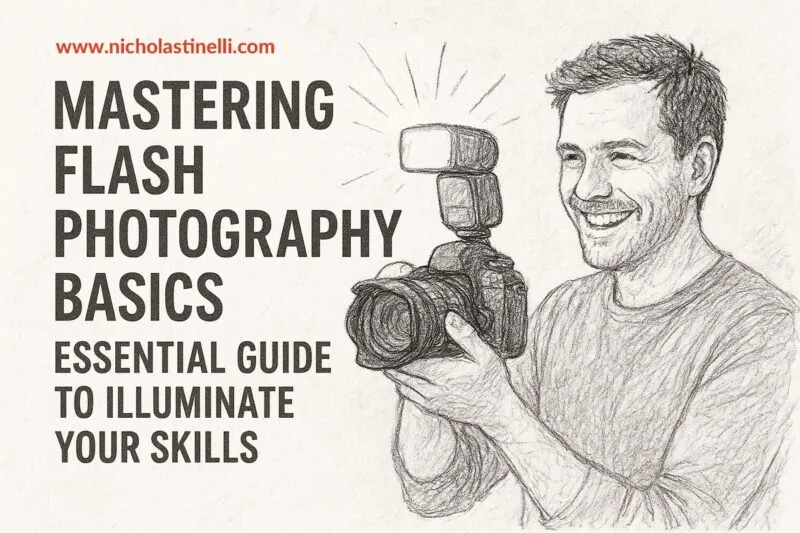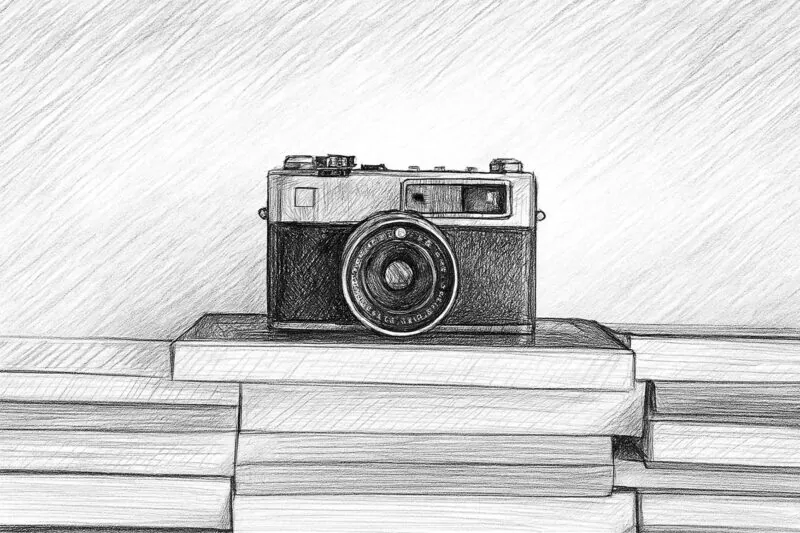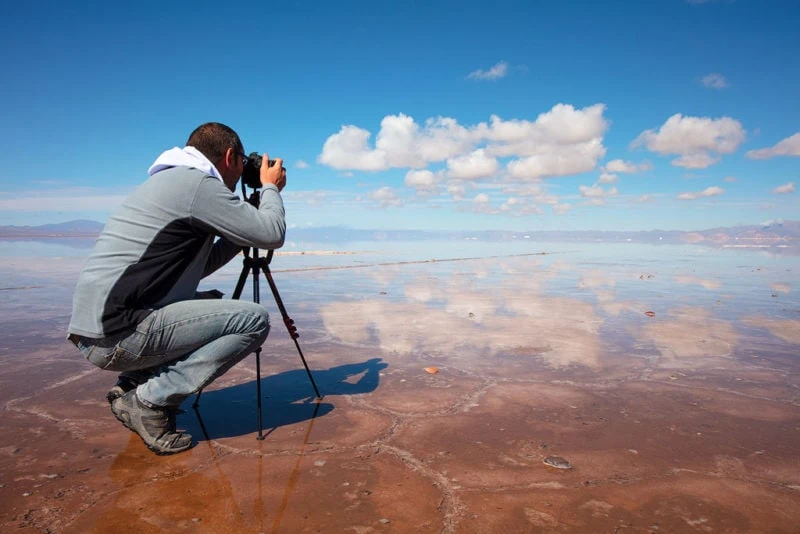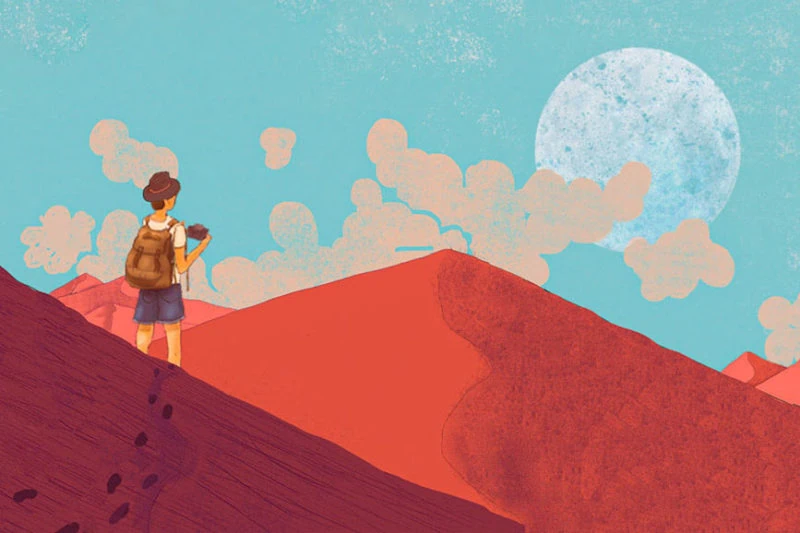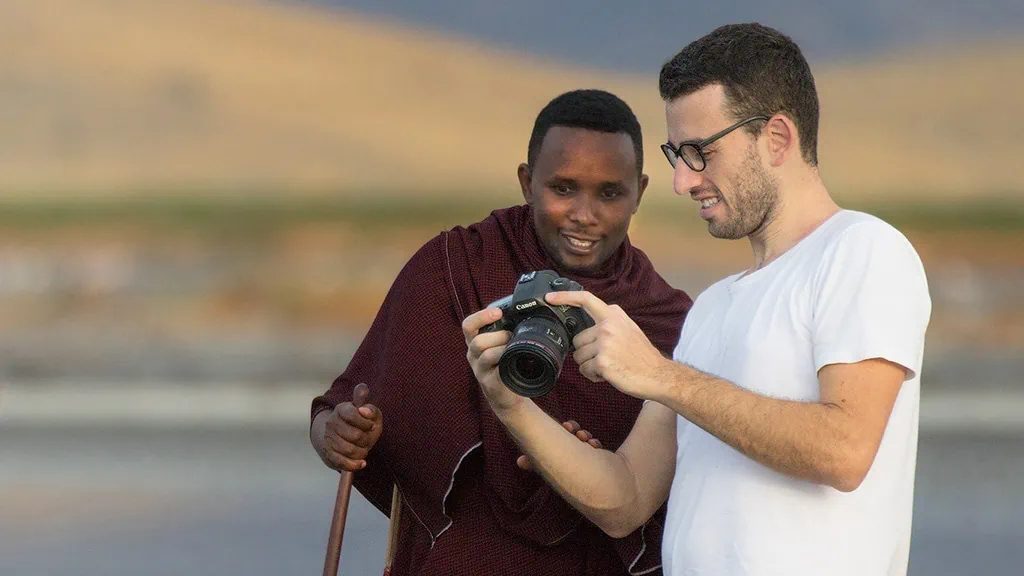Are you traveling to Argentina soon?

A stop in this beautiful capital city is inevitable.
Buenos Aires is a destination that captivates from the very first moment. Birthplace of tango, its streets pulse with music and dance, while every neighborhood reveals a unique character: the colorful houses of La Boca, the colonial charm of San Telmo, the elegance of Recoleta, and the creativity of Palermo.
Walking through the city is like stepping into an open-air museum of architecture, where European palaces coexist with modern street art.
Life in Buenos Aires unfolds in its cafés, bustling markets, and leafy parks, where locals gather to share stories over a mate.
Food lovers will be delighted by legendary parrillas serving Argentina’s world-famous beef, complemented by a glass of Malbec in one of the city’s many stylish wine bars. Nights are long and full of energy, with theaters, live music, and clubs that keep the city awake until sunrise.
But beyond the rhythm and flavors, Buenos Aires is also a cultural capital: home to the majestic Teatro Colón, grand museums, and one of the most beautiful bookstores in the world, El Ateneo Grand Splendid. Football passion runs deep, and history is alive in places like Plaza de Mayo and Recoleta Cemetery, resting place of iconic figures such as Eva Perón.
For Photographers, every corner is an invitation to create: from antique markets to murals, from tango dancers on cobblestones to the elegance of Belle Époque avenues.
As a Local Photographer, I spent quite a lot of time searching for some of the most beautiful corners in the city and I have decided to list them in this article: the 32 Best Places for Photography in Buenos Aires!
1. Palacio Barolo
This architectural masterpiece was designed by the Italian architect Mario Palanti, inspired by the cosmology of Dante Alighieri’s Divine Comedy.
The building rises 22 stories high and is divided into three symbolic sections: the basement and ground floor represent Hell, floors 1 to 14 correspond to Purgatory, and floors 15 to 22 embody Heaven.
When it was completed in 1923, the Palacio Barolo stood as the tallest building in all of South America—a true landmark of its time.
Today, it houses a variety of offices and offers a wide range of guided tours, both by day and at night. At the very top, a lighthouse crowns the building, and during the evening tours visitors can see it illuminated, shining over Buenos Aires.
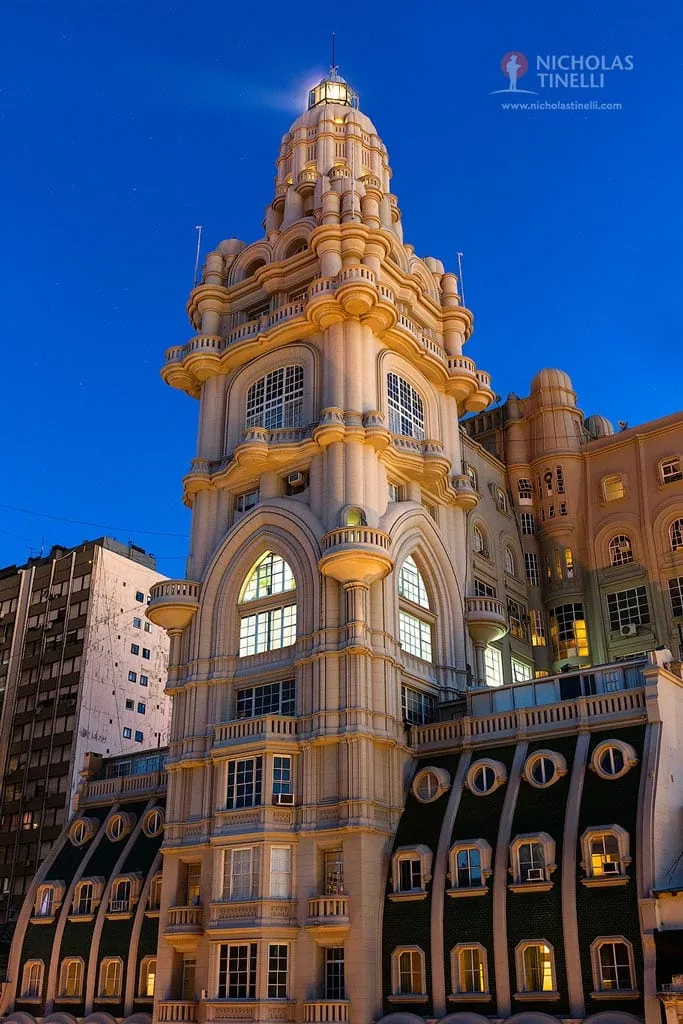
For photography enthusiasts, the Palacio also hosts a special photo tour on the second Saturday of every month at 11 a.m., providing a unique opportunity to capture its beauty and symbolism.
For further information about tours and prices visit their site: www.palaciobarolotours.com.ar
The richness in detail of the interiors and exteriors of the building makes it one of the best subjects for photography in Buenos Aires.
Location: Avenida de Mayo 1370, Monserrat.
2. Obelisk Chalet (also know as ‘’Chalecito’’)
This curious hidden gem of Buenos Aires sits atop a building on the bustling Avenida 9 de Julio. To spot it, you need to look up, beyond the giant advertising billboards that surround it.
Perched on the terrace, the tiny chalet predates even the iconic Obelisk. It was built in 1927 by Rafael Díaz, a Spanish immigrant and furniture entrepreneur, who dreamed of having his own cozy retreat in the sky.
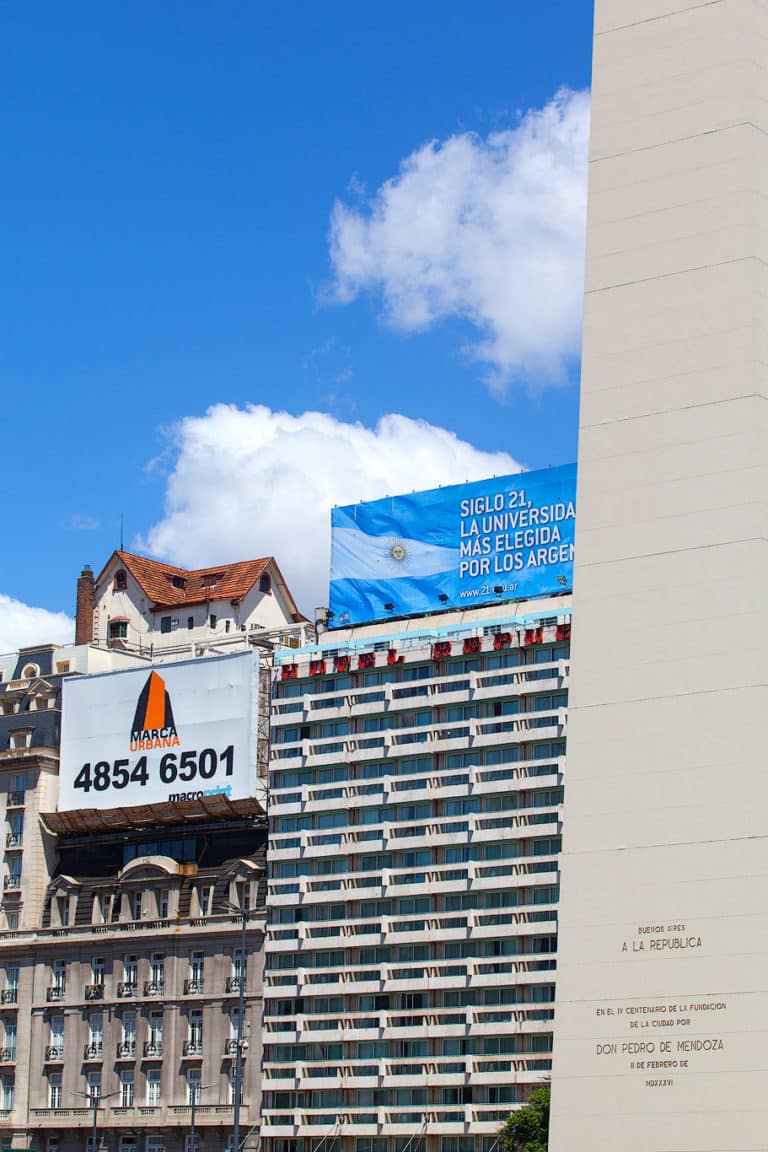
The house once served as a private hideaway, where Díaz would escape during the workday to enjoy his midday “siesta.”
Today, the chalet remains one of the city’s quirkiest attractions. While it’s not open to visitors, there are plenty of vantage points from nearby rooftops and high-rise buildings to capture the perfect photo of this unusual architectural treasure.
Location: Av. Sarmiento 1113 / 1117, San Nicolás.
3. Palacio de Aguas Corrientes
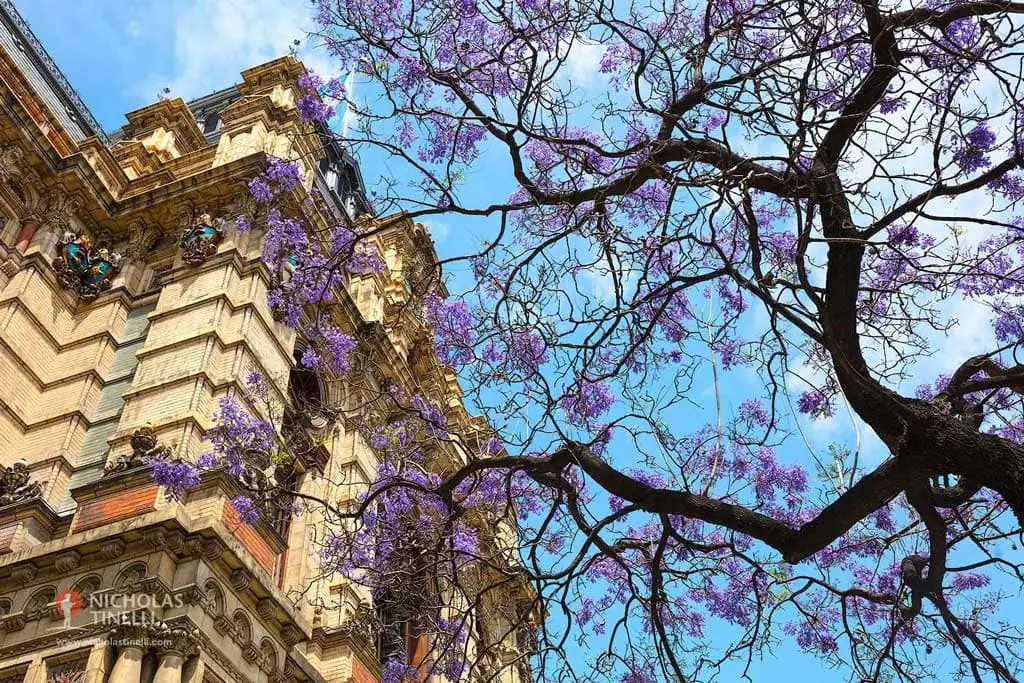
4. Plaza de Mayo (Casa Rosada, Cabildo, Cathedral)
The Plaza de Mayo is the main square of the city and the focal point for Argentinian political life. The most famous building in the square is the Casa Rosada, the office of the President of Argentina. On some special occasions, it is well illuminated for night photographs.
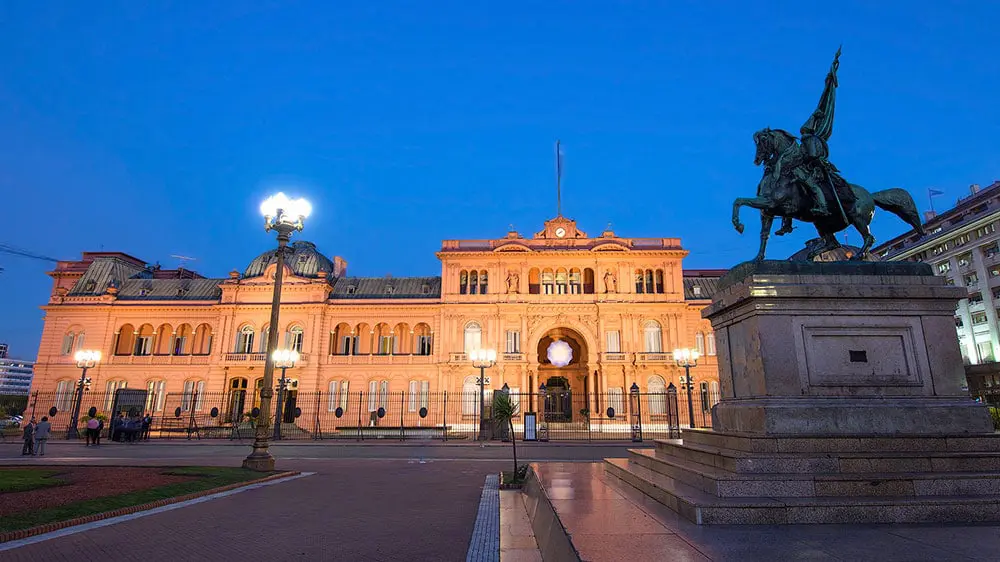
Another interesting building and historical landmark is the Cabildo Museum, an example of the Baroque style with ten arches on the main facade. Always well illuminated at night.
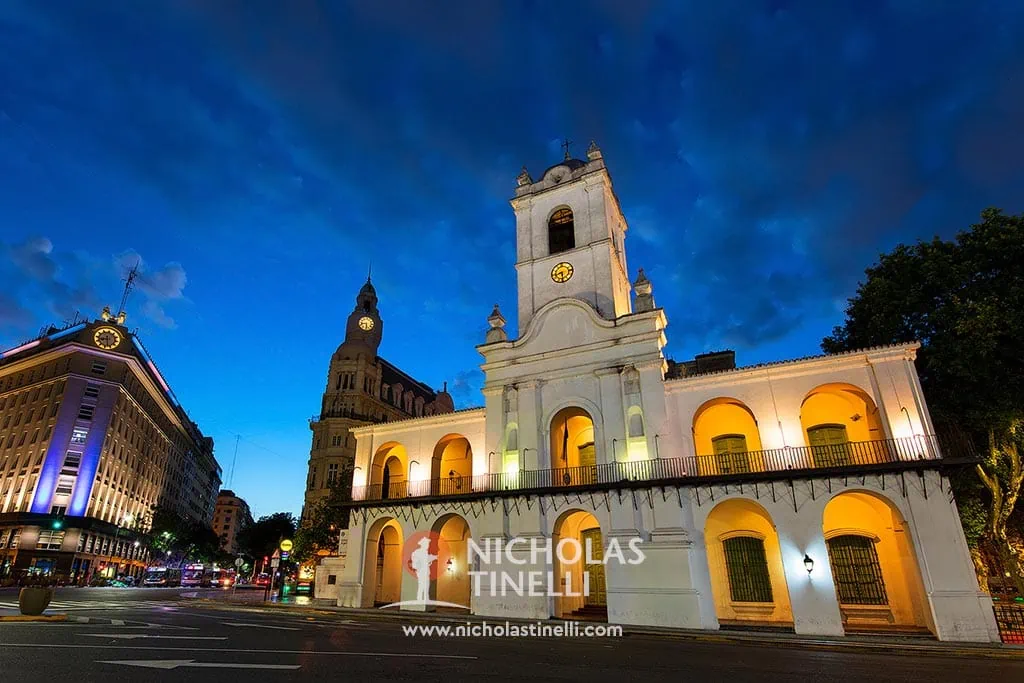
The Buenos Aires Metropolitan Cathedral (Spanish: Catedral metropolitana de Buenos Aires) is the main Argentinian Roman Catholic church and a great subject for photography with its important main facade, composed of twelve giant columns and a triangular pediment on top. Usually well illuminated at night.
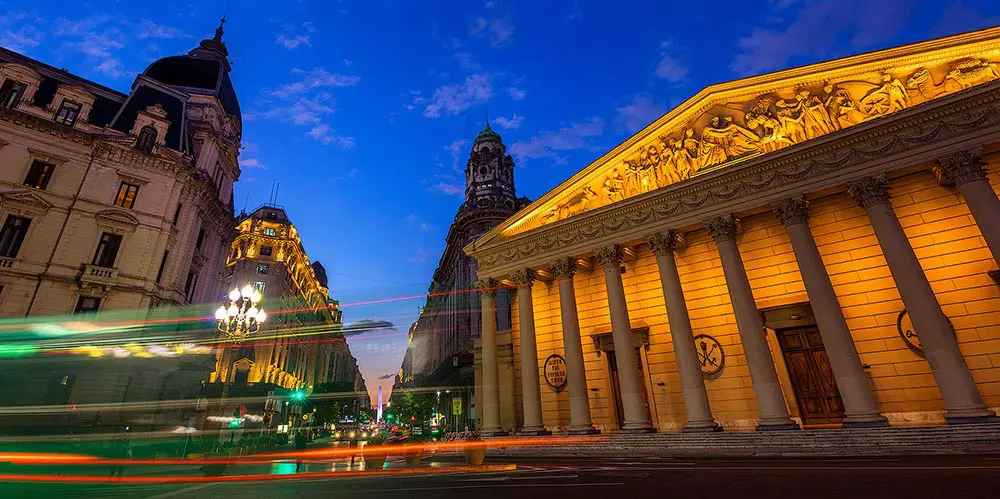
Location: Plaza de Mayo, Monserrat.
5. Kirchner Cultural Center
The Kirchner Cultural Center is a unique modern masterpiece in Argentina that absolutely worth a visit.
It used to be the headquarters of the Post Office in Buenos Aires and now it is a cultural center, where art exhibitions, meetings, and concerts are held.
Culture accessible to everyone, a reference point in the city with free entrance, an extensive program of activities, and an excellent organization.
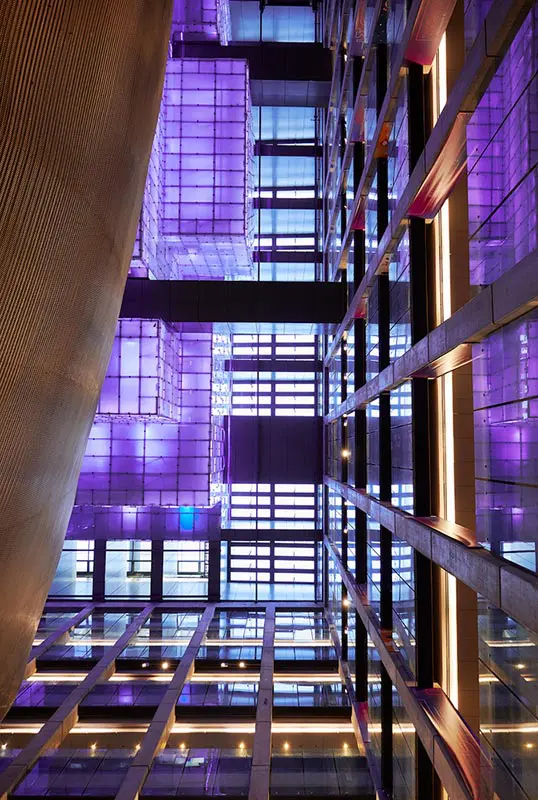
Photographers will appreciate the well-maintained details of the old building mixed with the modern lines of the central part and the huge “whale” (the main concert hall).
Add it to your list, it’s really worth it!
For further info please visit the official website.
Location: Sarmiento 151, Puerto Madero.
6. MAT, Art Museum of Tigre
This beautiful building located in Tigre (Buenos Aires), dates back to the beginning of the 20th century. A European-style building full of architectural details and artworks.
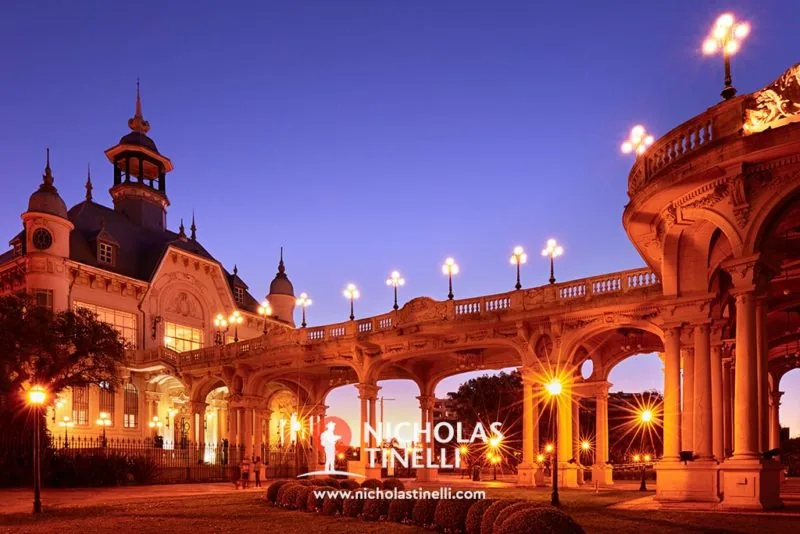
With an excellent location in front of the Luján River, it is an ideal subject for photography during the twilight since the museum’s external lighting is very good.
For more information on history, prices, and opening hours visit the official website of the museum.
Location: Avenida Victorica 972, Tigre.
7. Otto Wulff Building
This building is a great example of German Art Nouveau (Jugendstil) and it is considered as one of the most important of the city. Built between 1912 and 1914 by the architect Danish Morten F. Rönnow.
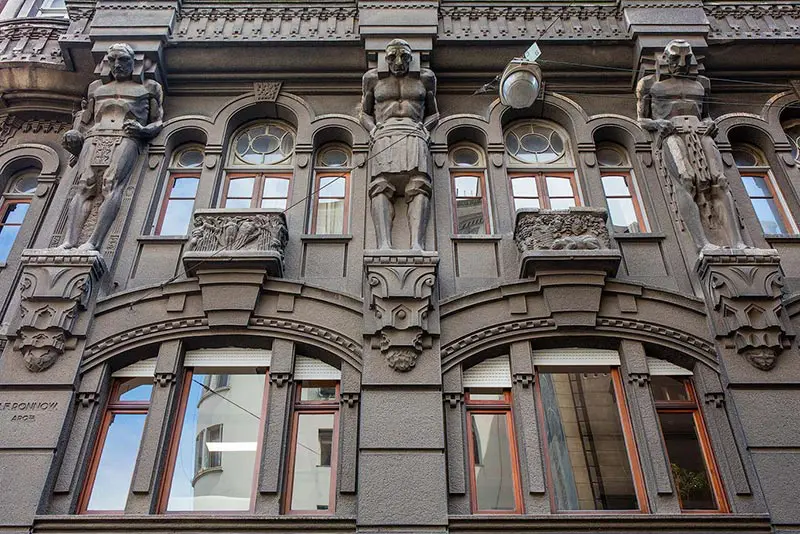
It is composed of 8 impressive human figures (Atlantes) replacing the columns and representing the different trades involved in the construction. Among the sculptures, the local fauna is well visible with bears, parrots, penguins, and owls.
Location: Avenida Belgrano 601, Monserrat.
8. Argentine National Congress
The massive Palace of the Argentine National Congress is a monumental building in Neoclassical style. Built between 1898 and 1906 by the architects Vittorio Meano and Julio Dormal. It is largely made of white marble with elaborately furnished interiors.
There are a lot of interesting points of view from where it is possible to take a good shot of the Congress. The sculptures of the Congressional Plaza, just in front of it, offer several ideas for the composition.
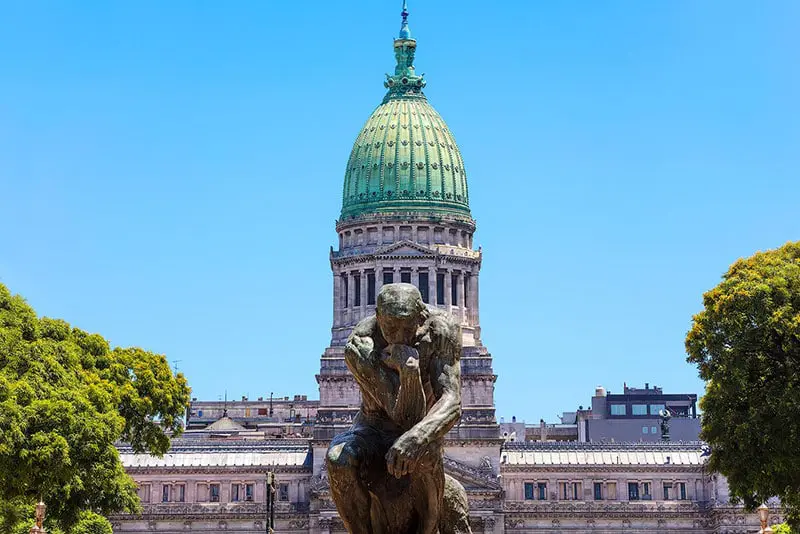
It is usually not well illuminated, but as for other buildings of the city, there are special dates (politician events, festivity) which are ideal to obtain a good photo during the twilight.
At the right corner of the Palace (Av. Rivadavia 1801), looking from the square, there is one of the most interesting buildings of the city: the Confiteria del Molino.
An Art Nouveau-style coffeehouse declared National Historic Monument in 1997. At the moment it is under restoration by the government and will re-open in the future as a café and museum.
Location: Av. Rivadavia 1864, Monserrat.
9. Mirador Massue and Palace of Justice
This building in Art Nouveau style is located a few steps far from the Obelisk and the Colon Theatre and although its actual name is ‘’Edificio Tribunales Plaza’’, it is popularly known as Mirador Massue, from the name of the original French architect.
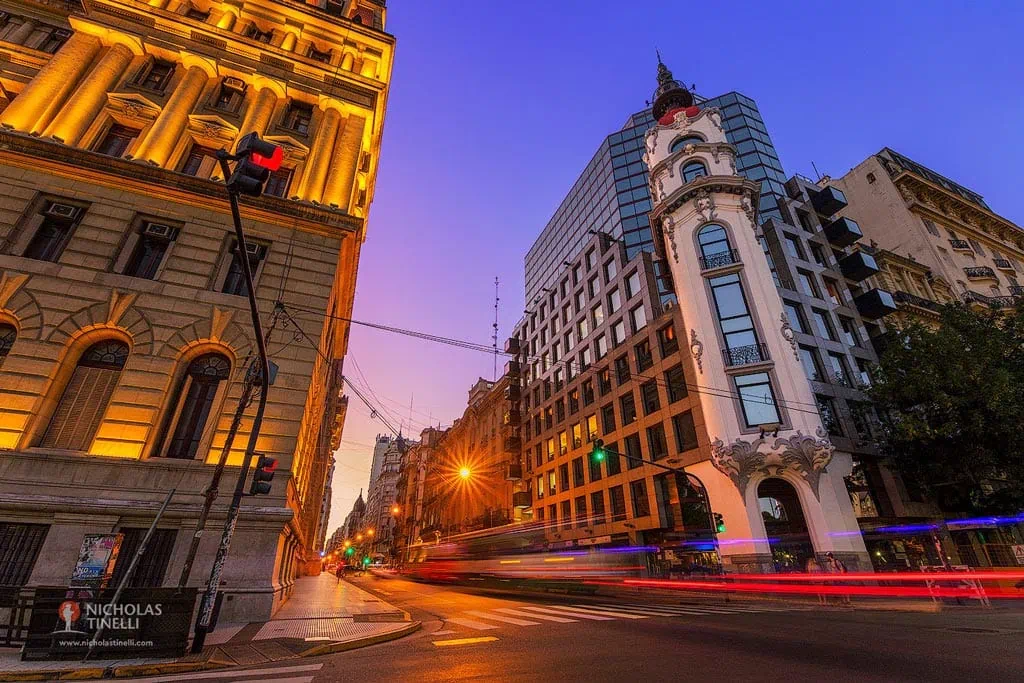
In the nighttime, it is illuminated, but not that well for photography.
Besides, the massive Palace of Justice, designed in monumental Eclectic Neoclassical style is a National Historic Landmark and seat of the Supreme Court and other lower courts.
The illumination is always very good for twilight shots.
Location: Talcahuano 610 / 550, San Nicolás.
10. Planetario Galileo Galilei
The Planetarium Galileo Galilei is a spherical construction for space observation located in the “Bosques de Palermo”.
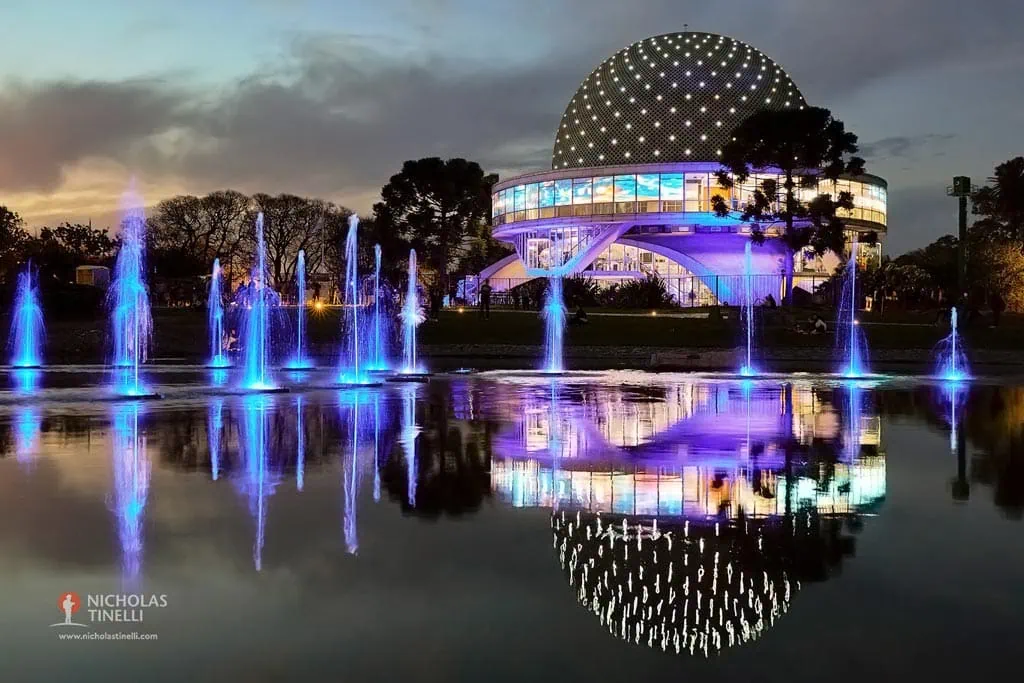
It is usually illuminated at night time, but on “special” occasions (astronomy events and festivities) the lights are better than normal. If you plan to take a well-made night shot of the Planetarium (with interesting lighting) my suggestion is to ask directly at the following contact: planetario@buenosaires.gob.ar
Location: Av. Sarmiento y B. Roldán, Parque Tres de Febrero, Bosques de Palermo.
11. Torre Monumental
The Torre Monumental is a clock tower built in the Palladian style located in the district of Retiro.
It was a gift from the local British community to the city in commemoration of the May Revolution of 1810’s centennial.
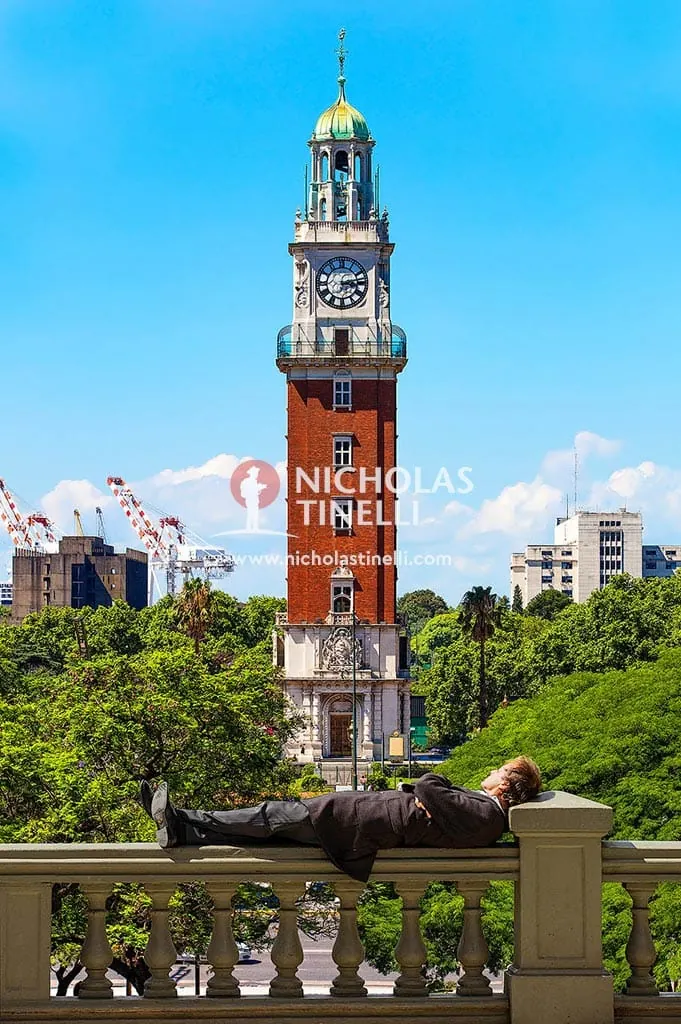
If you book a room on one of the highest floors of the Sheraton Hotel (Calle San Martin 1225/1275), it is possible to capture a suggestive panoramic view of the whole area in front of it, with the tower, the Retiro station, and the train tracks in the background.
Location: Plaza Fuerza Aérea Argentina, Retiro.
12. Floralis Genérica
This is a unique sculpture made of steel and aluminum.
Located in Recoleta, next to the University of Law. The Floralis Generica flower, created in 2002 by the architect Eduardo Catalano was designed to move, closing its petals in the evening and opening them in the morning.

It is a good subject in terms of photography, surrounded by a park and placed above a reflecting pool. The pistils are well illuminated by night and even better on some occasional dates.
Location: Plaza de las Naciones Unidas, Avenida Presidente Figueroa Alcorta, Recoleta.
13. Puente de la Mujer
Designed by the Spanish architect Santiago Calatrava this rotating footbridge is located on the docks of Puerto Madero, the modern architectural district of the city.
Started in 1998, it was officially opened in 2001. The architect has described the design as a synthesis of the image of a couple dancing the tango.
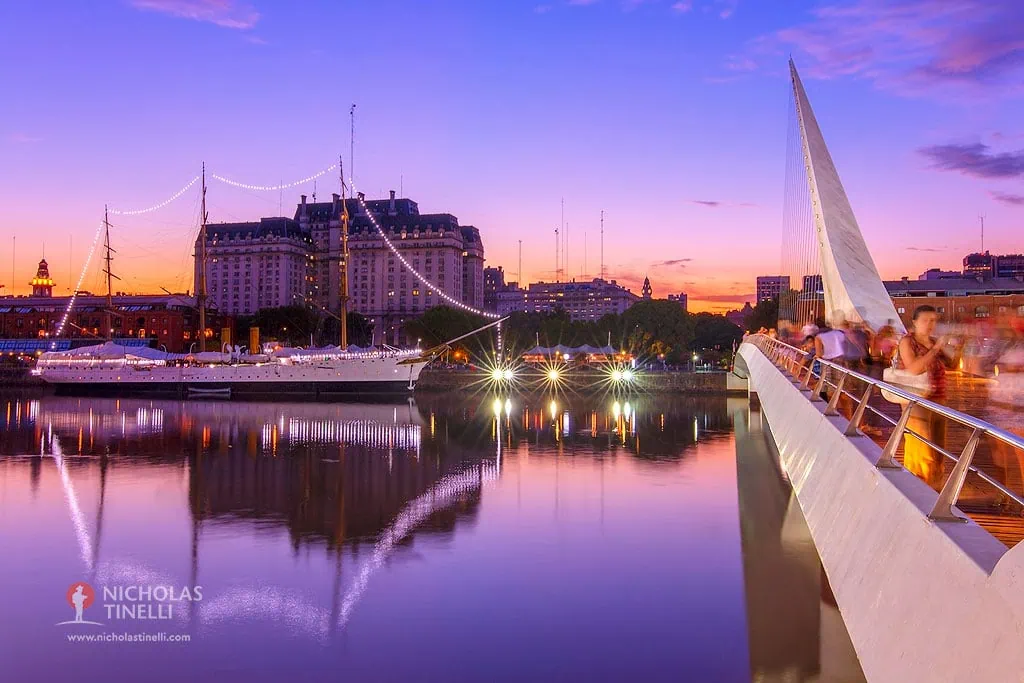
The Puente de la Mujer bridge and many other details in the neighborhood, like the big cranes, the dock buildings, the frigate, and the skyscrapers are an ideal environment for a photographer searching for the perfect composition. Mostly towards the evening, when everything is illuminated.
P.S.: Don’t forget the tripod!
Location: Dock 3, Puerto Madero.
14. Ateneo Grand Splendid Library
The Ateneo Grand Splendid is considered one of the most beautiful bookshops in the world. It opened as a theatre called ‘’Grand Splendid’’ in May 1919, then it became a cinema and finally a library.
Despite the changes, the building still retains the feeling of the grand theatre it used to be. One of the most fascinating places for photography in Buenos Aires!
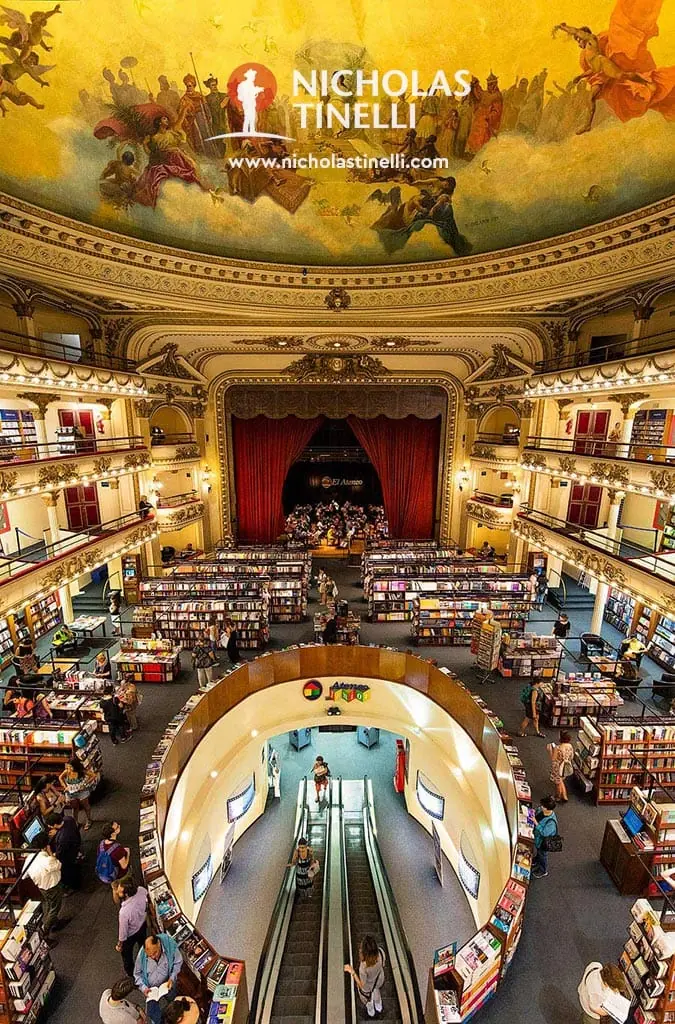
Prepare your camera:
The most impressive details on the external facade are the atlantes, sculpted by Troiano Troiani.
The building interiors feature ceiling frescoes painted by the Italian artist Nazareno Orlandi, ornate carvings, crimson stage curtains, and many, many books.
Location: Av. Santa Fe 1860, Recoleta.
15. Guemes Gallery
This commercial gallery was designed in Art Nouveau style by the Italian architect Francisco Gianotti in 1913.
The interiors are full of precious details for photographers and the viewpoint at the top allows visitors to have a panoramic view of the city and the nearest domes.
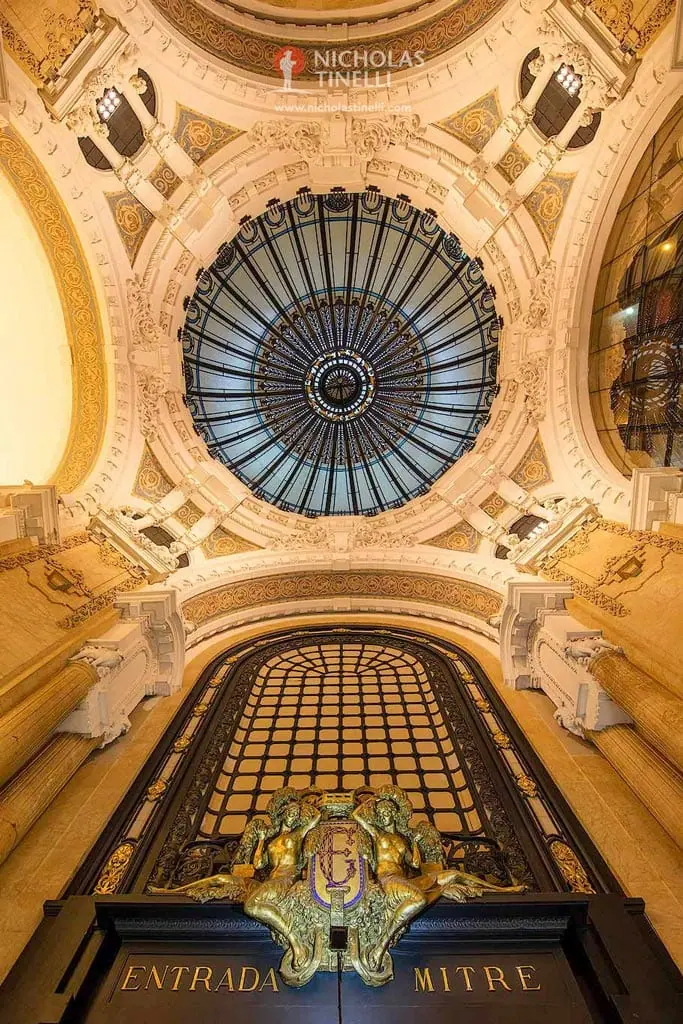
The viewpoint opens from Monday to Friday (10 am to 1 pm – 2 to 4:30 pm).
Location: Florida 165 / San Martín 170, San Nicolás.
16. First National Bank of Boston and Bencich Building
These are two architectural gems with the best domes of the city located at the corner between Florida street and Diagonal Norte.
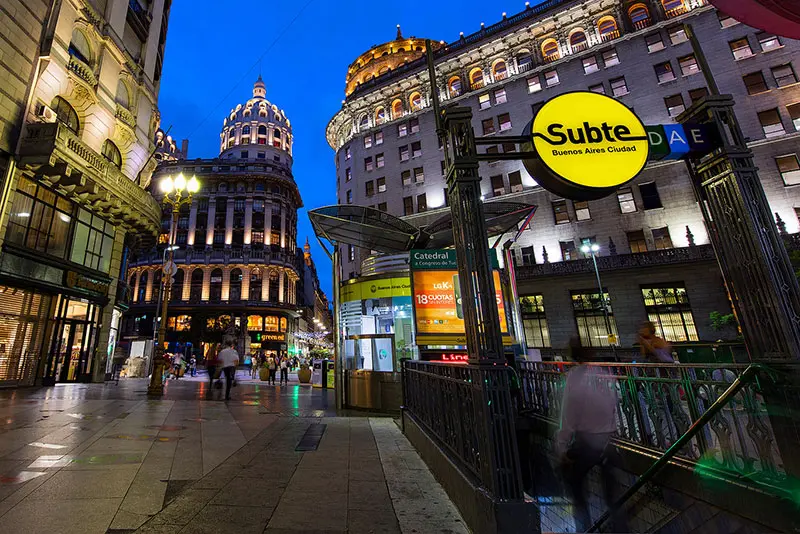
By day the best view is probably from the viewpoint of the ‘’Güemes Gallery’’ (previous paragraph). The former Boston Bank and Benchich Buildings are very well illuminated for night shots.
Location: Florida 99 / Diagonal Roque Sáenz Peña 615, San Nicolás.
17. Barrio Chino (Chinese District)
The Buenos Aires Chinatown (Spanish: Barrio Chino) starts from a beautiful “Paifang”, a Chinese traditional style arch on “Arribeños”, the main street of the neighborhood.
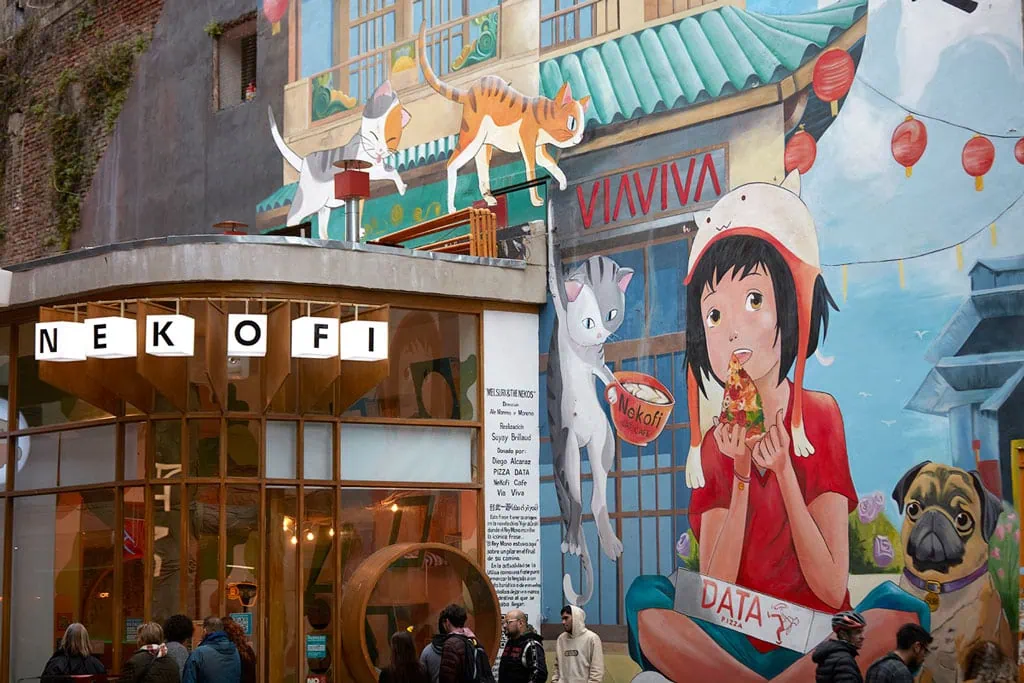
There are several traditional shops, restaurants, and a Buddhist Temple, the ‘’Tzong Kuan’’ (Montañeses 2175). It is the heart of the Chinese community in Argentina.
An interesting place for photography in Buenos Aires as there are a lot of details with a fusion of Asiatic/Latin culture and great wall art paintings near the main arch.
Location: Arribeños, Belgrano.
18. Faculty of Engineering
This is the unique non-religious Neogothic construction of the city.
Designed by the civil engineer and architect Arturo Prins with the collaboration of two Italian architects, Francisco Gianotti, and Mario Palanti. Since 1948 it hosts the University of Engineering.
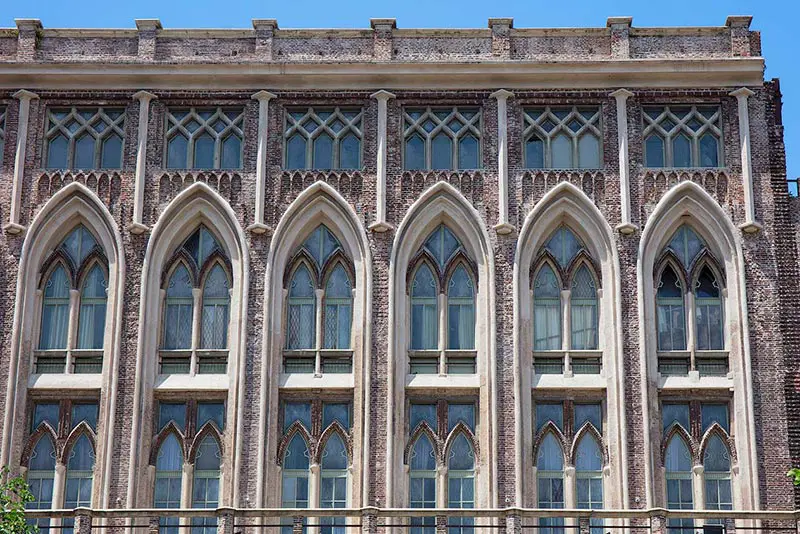
The building captures the viewer’s attention and the repeated gothic arches are interesting details for a shot. By night is not well illuminated for photography.
Location: Avenida Las Heras 2214, Recoleta.
19. Pacífico Gallery
The Galerias Pacifico are located between Florida Street and Cordoba Avenue. Definitely the most important shopping center in the city.
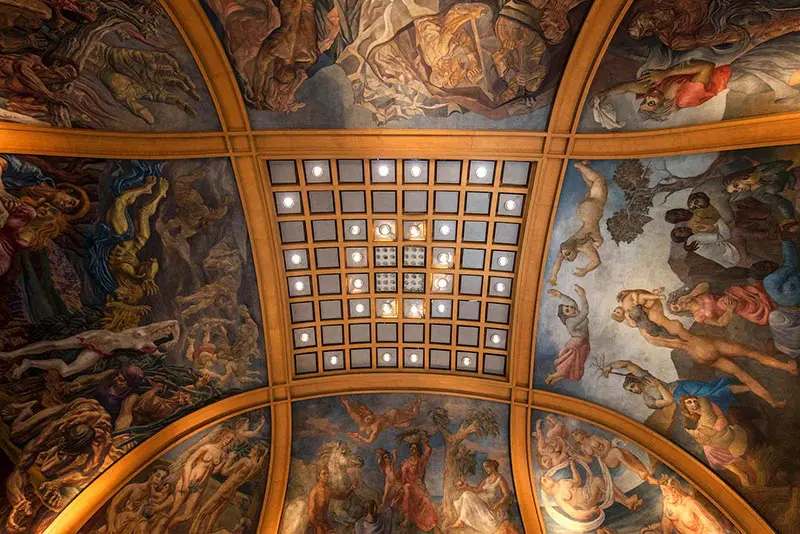
The building was designed by the architects Emilio Agrelo and Roland Le Vacher in 1889 in Beaux-Arts style. The central sector is structured with a large cupola decorated with magnificent frescoes by various artists, among which, the famous Antonio Berni.
It is usually very crowded, but surely worth a visit, especially for the paintings. The outer part of the building is always very well illuminated for night shots.
Location: Florida 753, San Nicolás.
20. The National Library
The National Library (Spanish: Biblioteca Nacional) was designed in the Brutalist style by the architects Clorindo Testa, Francisco Bullrich, and Alicia Cazzaniga and opened in 1992.
It is the largest library in the country.
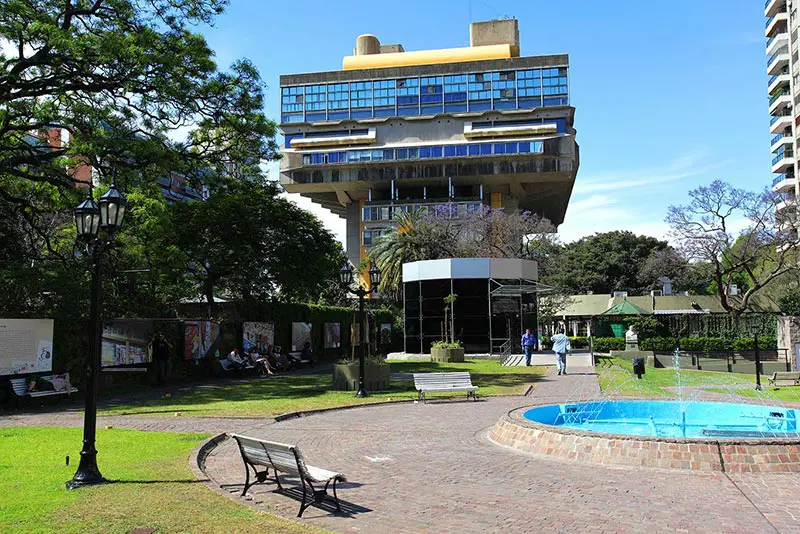
Location: Calle Agüero 2502, Recoleta.
21. Evita
A classic postcard from Buenos Aires, a symbol of the city on the wide Avenida 9 de Julio. The artistic steel-made portrait of María Eva Duarte de Perón, known as ‘’Evita’’, is installed on both the side walls (north and south) of the Ministry of Health building.

These pieces of art were created by the Argentinian artist Alejandro Marmo.
Location: Avenida 9 de Julio 1925, Monserrat.
22. Obelisk
This is the most visited place for photography in Buenos Aires, a true icon of the capital. The Buenos Aires Obelisk was designed by the Argentinian architect Alberto Prebisch and erected in 1936 to commemorate the fourth centenary of the first foundation of the city.
It measures 67.5 meters and has only one entrance. On its top, there are four windows that can only be reached by a straight staircase of 206 steps.
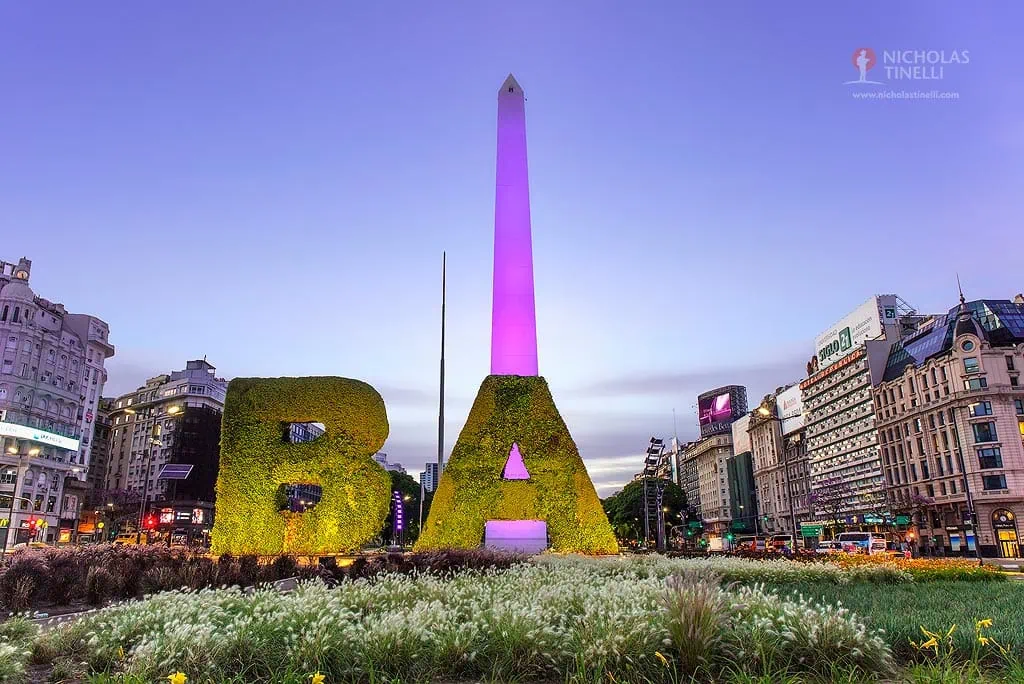
The points of view from which is possible to take a good shot of the Obelisk are many: in springtime with the Jaracanda trees in flower from “Avenida Presidente Roque Sáenz Peña”, or also the fairly recent hedge sculpture BA with the monument in the background (as in the photo).
For night shots it is always very well illuminated. If you want to take a great shot of the whole Avenida 9 de Julio with the Obelisk and the traffic lights at sunset there are quite a lot of places to set your tripod. The most popular lookout point for this photograph is the terrace of the Hotel Marriott (former Hotel Panamericano – Carlos Pellegrini 551), it is an expansive choice but worth it if you really need the best view.
Depending on your idea there are many other beautiful and high terraces available.
Location: Plaza de la República, San Nicolás.
23. Colón Theatre
On the Avenida 9 de Julio, we also find the main opera house of the city: the Colon Theatre. Designed in Eclectic style by the architect Francesco Tamburini.
Acoustically considered to be one of the best concert venues in the world amongst the Vienna’s Musikverein, Amsterdam’s Concertgebouw, Berlin’s Konzerthaus, Boston’s Symphony Hall, Milan’s La Scala, London’s Royal Opera House, New York’s Metropolitan Opera House, and the Paris Opera House. A visit to this jewel of the capital is highly recommended, even if you are not interested in operas!
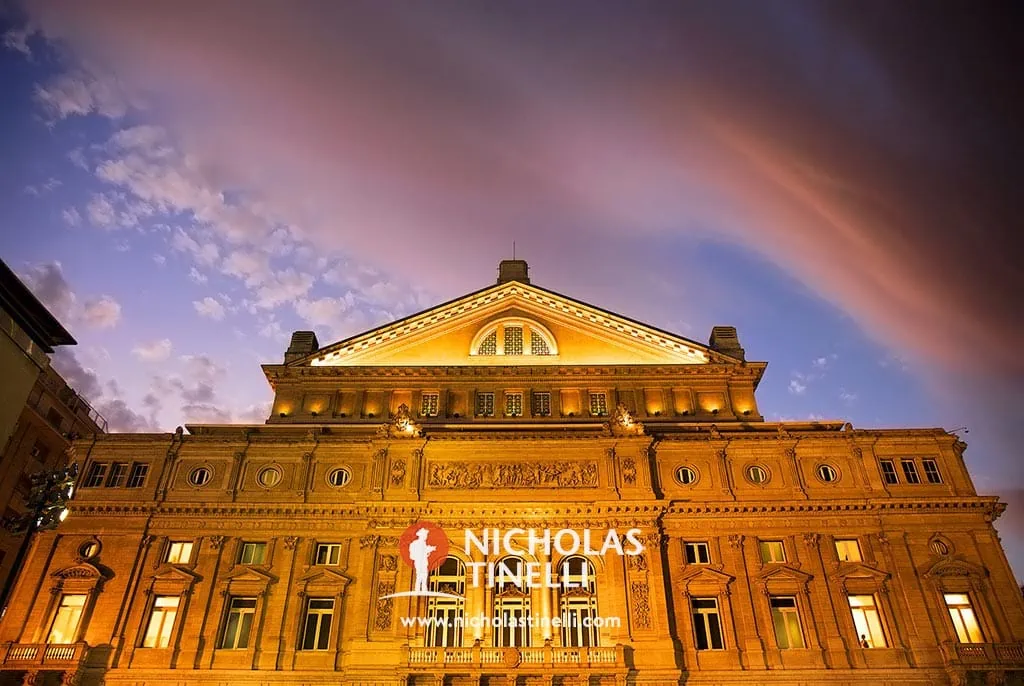
It is open every day from 9 am to 5 pm.
For further info about prices visit the site: www.teatrocolon.org.ar
Photographers will appreciate the exterior of the building, as well as the details of the interiors: the Golden Room, the Concert Hall, the balconies, and the allegorical ceiling frescoes of the cupola decorated by the Argentine painter Raúl Soldi.
The structure is always very well illuminated.
Location: Cerrito 628, San Nicolás.
24. San Telmo Market
This old covered market located near Plaza Dorrego was designed in 1897 by architect Juan Antonio Buschiazzo and it is certainly one of the most atmospheric places of the city, with plenty of food stands and antique shops.
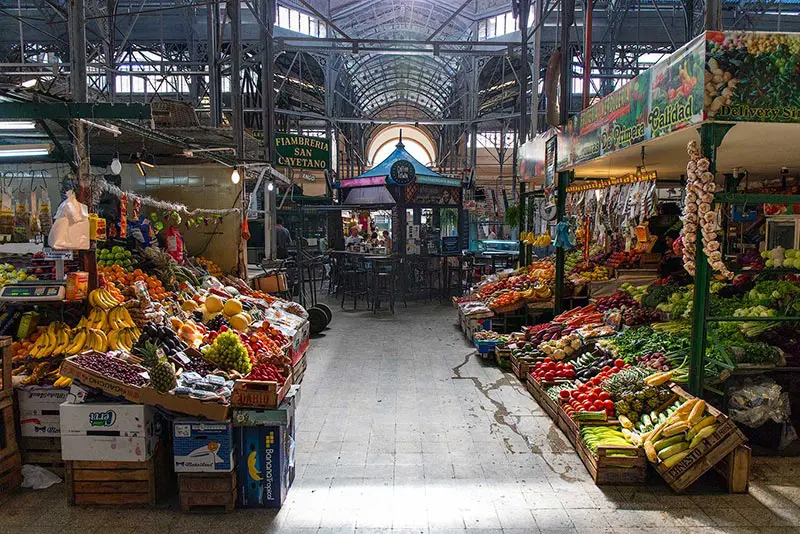
The central body of the San Telmo Market is composed of a massive iron structure where there are sellers of fish, meat, vegetables, fruits, restaurants and cafes.
Location: Carlos Calvo 495, San Telmo.
25. Street Art
In Buenos Aires, as in other big cities in the world, there is no shortage of important street artists. I mention one of them: the Argentine Alfredo Segatori. His giant murals can be seen in several parts of the city and they capture the attention of the viewer, sometimes occupying the entire facade of a building.
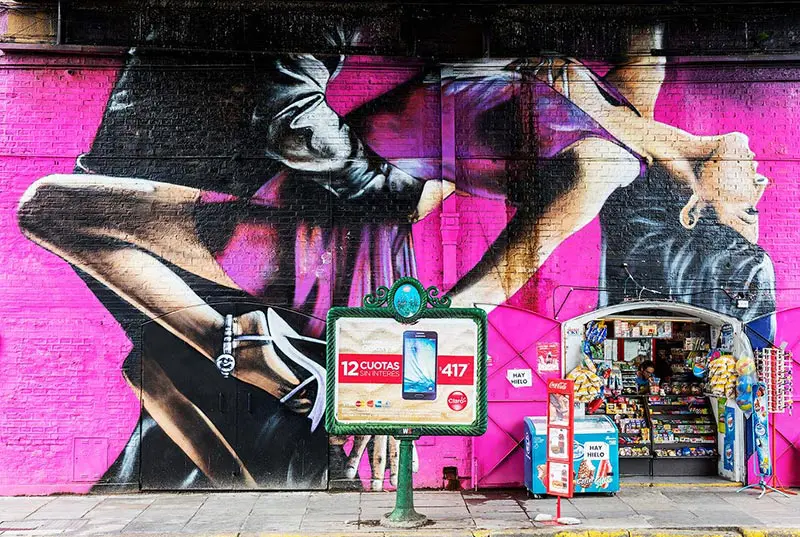
Mixed with human elements these wall paints are interesting backgrounds for photographers.
For further information visit the artist page: www.alfredosegatori.com.ar
26. Japanese Garden
This picturesque oasis is one of the largest Japanese-style gardens in the world outside Japan. It was completed in 1967 and opened on the occasion of a trip to Argentina by Prince Akihito and Princess Michiko of Japan.
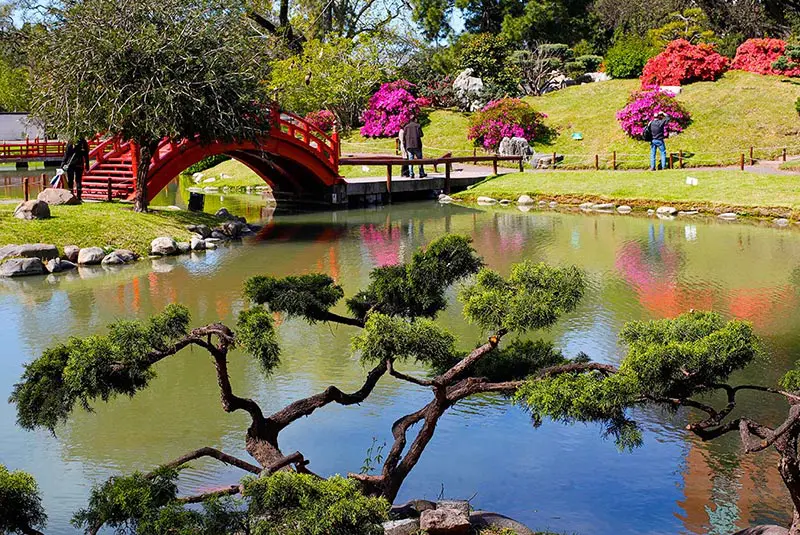
The best season for a visit is spring when the garden blooms and reaches the top of its splendor. It is a charming place: the red bridge, the granite sculptures, the Peace Bell, the stone lanterns, the carps in the lake, and the surrounding Japanese flora.
A great place for photography in Buenos Aires and a genuine piece of Japan in South America!
It is open every day from 10 am to 6 pm.
For further information about prices visit the site: www.jardinjapones.org.ar
Location: Av. Casares 2966, Palermo.
27. Recoleta Monumental Cementery
It might sound strange to refer to such a place, but due to the impressive mausoleums and statues of notable people ‘’La Recoleta’’ is considered as one of the most beautiful cemeteries in the world. The place gets its name from the monks of the ‘’Order of the Recoletos’’ who first arrived in this area.
The cemetery is built around their convent and a church, Our Lady of Pilar. The convent’s garden was converted into the first public cemetery of Buenos Aires in 1822.
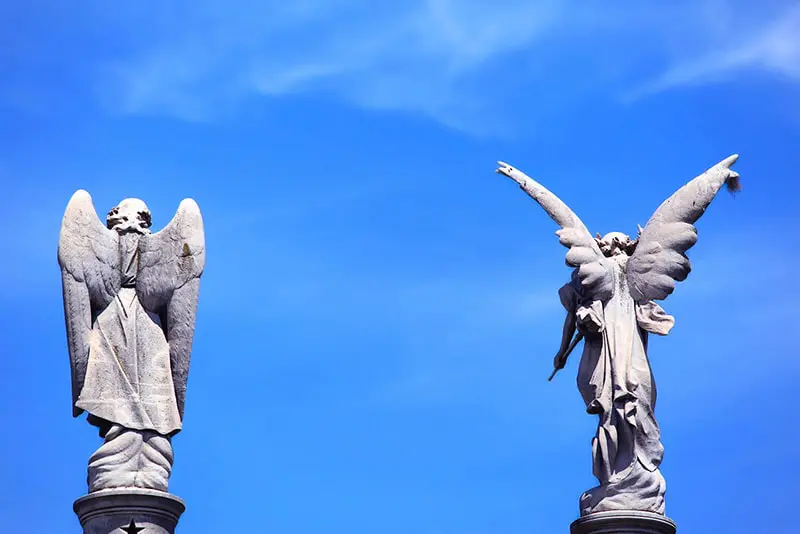
It contains many monumental sculptures and a wide variety of architectural styles such as Art Deco, Art Nouveau, Neo-Gothic and Baroque. It’s easy to get lost in this quiet place of memory, with its mysterious beauty.
As a Photographer, I’m attracted to the contrast between the antique statues and the modern buildings around, as well as the decadence of some mausoleums, that give the place a particular atmosphere.
Location: Junín 1760, Recoleta.
28. Carlos Thays Botanical Garden
Nature lover? Tired of the city traffic?
The Botanical Garden is the perfect place to take a rest and breathe, walking among trees, plants, sculptures, and monuments while enjoying your passion for photography in Buenos Aires.
This green oasis located in the Palermo neighborhood was designed by the French landscape architect Carlos Thays and inaugurated in 1898. It includes five greenhouses and has three different gardening styles: the Roman, the French ant the Oriental.

There’s also an abundant collection of flora from Argentina and other Latin countries, such as the Araucaria or the Yerba Mate, from Paraguay, as well as sequoias from the United States.
The park contains a Botanical Museum and a library with 1,000 books and 10,000 publications from all over the world, which are free for consultation by visitors.
The entrance is free.
Location: Av. Santa Fe 3951, Palermo.
29. La Boca
If you are searching for a street Tango exhibition La Boca is the right place to go to (as well as “Plaza Dorrego”, in the San Telmo neighborhood).
Definitely the most colorful place for photography in Buenos Aires.
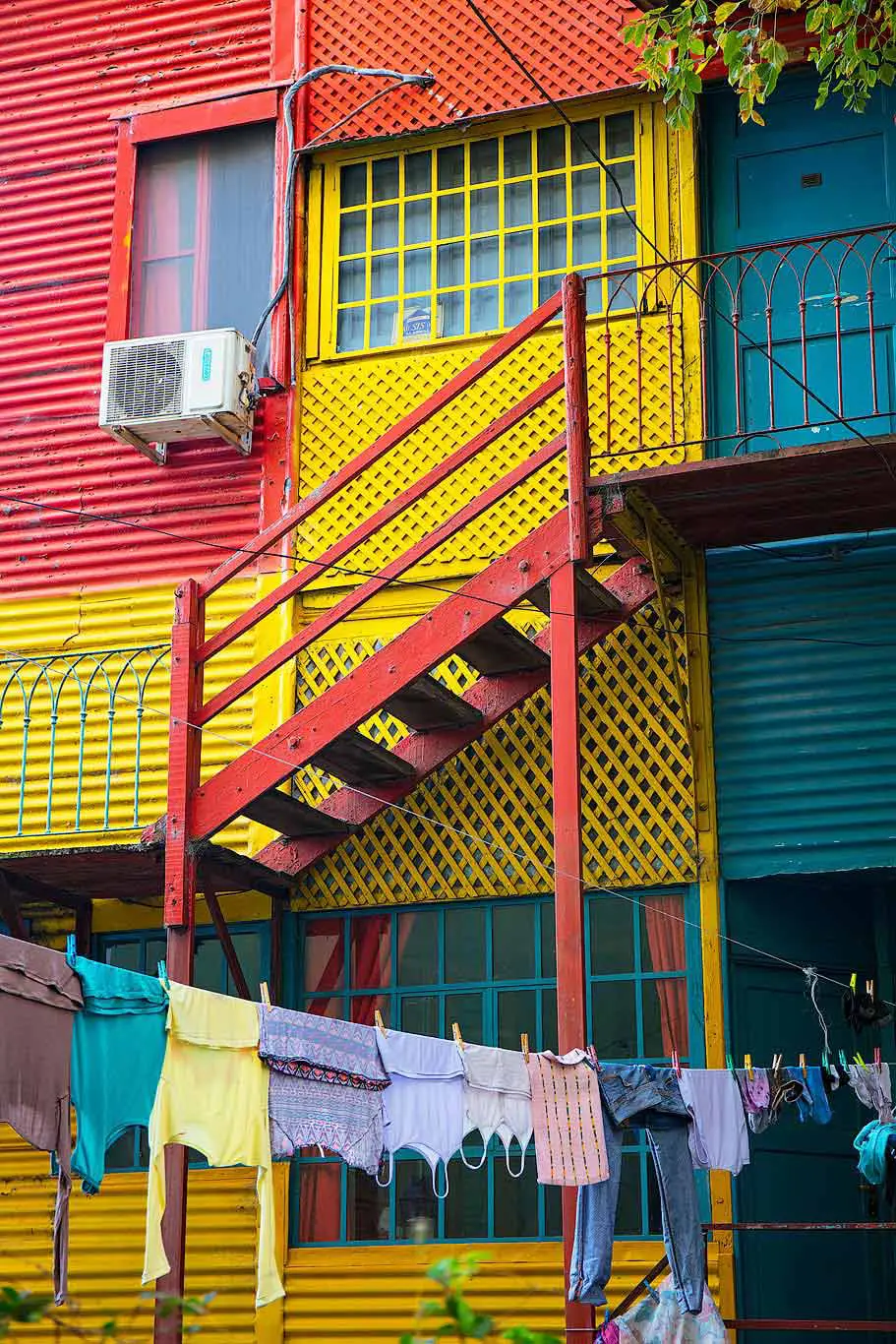
Characterized by the famous Caminito, a little walkway painted by the Argentine artist Benito Quinquela Martín, one of the most famous postcards of the city.
In recent years it has become very touristic and may not appeal to everyone.
Please ‘’be careful’’ with your equipment, I’ve been there a lot of times and nothing never happened, but this is not the safest area of the city and is better to stay in the tourist area.
Location: Valle Iberlucea del, Dr. and Magallanes, La Boca.
30. Ricardo Rojas House Museum
It was once Ricardo Rojas’s house, creator of the first chair of Argentine Literature at the University of Buenos Aires. Poet, essayist, and teacher, his writings are centered in the dialogue of the European with the American and in particular with indigenous America.
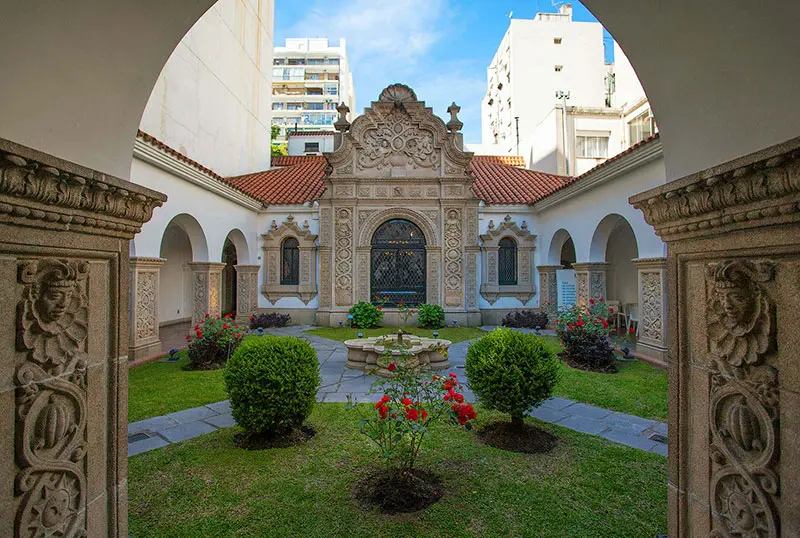
In accordance with its “Euríndica” conception, Rojas inspired the construction of this residence, the work of the architect Angel Guido.
This word originated from “Europe” and “Indias”, is a neologism created by the writer based on his ideas of a new America, the fruit of the fusion of autochthonous roots and European influences.
It now hosts a museum, open from Tuesday to Saturday (11 am to 7 pm).
Photographers will appreciate the precious details.
Location: Charcas 2837, Recoleta.
31. The rubber trees of Recoleta
Just in front of the Recoleta cemetery, in the green “Plaza Intendente Alvear” stand the oldest trees of the city: the rubber trees, called in Spanish ‘’Gomeros’’.
Over 200 years old, with giant roots and branches, they appear still very robust.
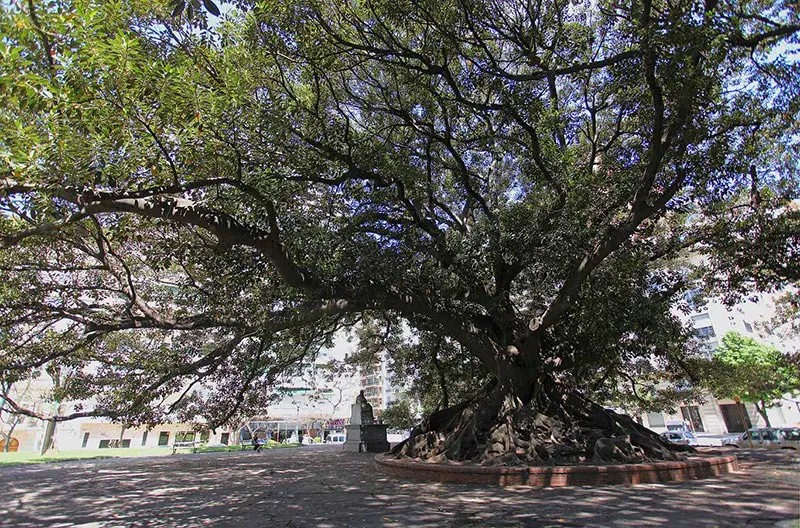
A wonder of nature in the heart of the city that surely deserves a photo!
Location: Plaza Intendente Alvear, Recoleta.
32. Pasaje Defensa (Casa de los Ezeiza)
Located half a block from the famous “Plaza Dorrego”, it was an old Italian-style house built around 1876, a property of the Ezeiza Family, who later abandoned it, like many other upper-class residencies of the area, due to the Yellow Fever Epidemic.
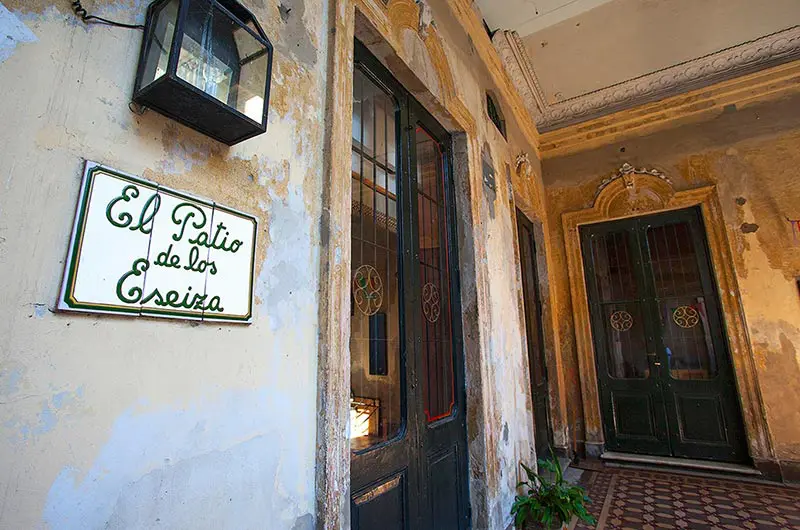
It now hosts a commercial gallery called Pasaje Defensa.
It is one of the best examples of a typical house of San Telmo before the outbreak of the epidemic.
Location: Defensa 1179, San Telmo.
I hope this list of places for Photography in Buenos Aires will be useful in planning your trip to Argentina.
If you prefer to discover the city with me and, at the same time improve your photographic skills, check out my Photo Tours in Buenos Aires .

